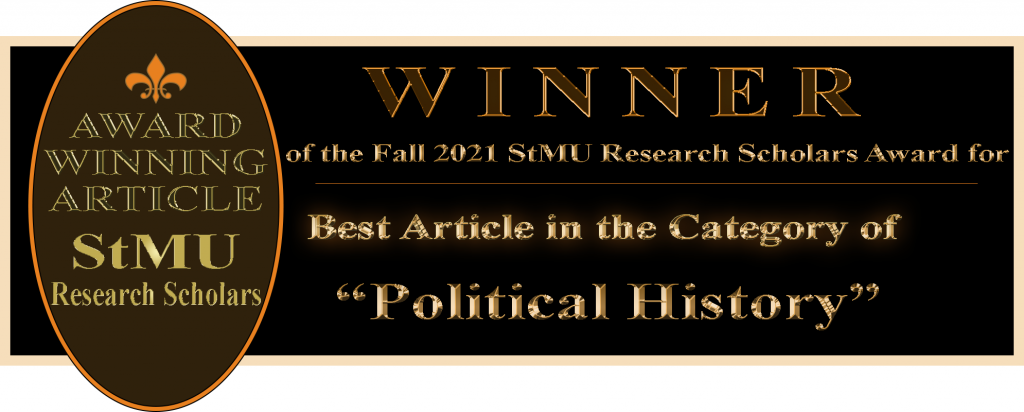
February 1840: the President of the Texas Republic, Mirabeau Lamar, stood in his warm, stale office. There is something about those old rooms of power; they always seemed stuffy. Lamar was looking down on a message set upon his desk. Colonel Henry Karnes wrote that an old foe visited his town on the frontier, one whom Lamar personally faced in battle. This recent encounter was surprisingly not a raid. The report stated that three leaders rode into town and caused a scare for the settlers. Unexpectedly, the visitors wanted to discuss a possible peace between the two nations.1
These men were not the Mexicans. They were a much older opponent and now asking for peace. These leaders represented a group formidable enough to fight off the Mexicans and limit the Spanish expansion into North America. Referred to as “Lords of the Plains,” these Native Americans called themselves the Nʉmʉnʉʉ (NUH-MUH-NUH), or “The People” in their language. The rest of the world knew them as the Comanches.2
President Lamar hesitated despite the opportunity to end years of bloodshed. Similar encounters had been used as ploys to gain an advantage over the Texans. J.W. Wilbarger, an eyewitness historian documented that, “this was not the first time the Comanches had feigned friendship and expressed a desire to cease hostilities towards the whites to throw the setters off their guards so that they might more effectually raid the country,” which resulted in the deaths and capture of settlers and horses.3
Nevertheless, here was a chance to end nearly two centuries of bloody fighting. Lamar hesitantly agreed to arrange a peace conference with the Comanche Nation. The date was set for March 19th at the country’s westernmost settlement and former capital of Texas, San Antonio. Lamar assigned two men as the peace commissioners: General H. D. Mcleod, and acting Secretary of War, Colonel William G. Cooke. Two companies of the Texas State Militia accompanied the high-ranking officers. Additionally, Texas Rangers were on-hand. Known as “knights on the frontier,” Texas Rangers were veterans of many Native American battles.
When the fateful day arrived in San Antonio, the Anglo-Texans waited for the arrival of the Comanches. Leading the peace party was their chief and medicine man Mukwoorʉ (Muk-wah-ruh), which translated into English is “Spirit Walker.” He was accompanied by thirty-five other chiefs, their family members, and retainers totaling sixty-five Comanches.4 They brought with them a few hostages captured during their raids over the previous years.
The Lords of the Plains
Compared to other Southern Plains Indians, the Comanches were newcomers, arriving to the area in the early eighteenth century.5 On arrival, Comanches encountered well-established domains of the Southern Ute, Pawnees, Osage, Tonkawas, Apaches, and Navajo tribes. Prior to their migration, Comanches had originated in the northern Rockies and were once a faction of the powerful Shoshones Tribe residing in parts of Wyoming, Idaho, and Utah west of the Great Salt Lake.6
No one truly knows why the Comanches separated from the Shoshones. A Comanche traditional story tells of the split occurring over a dispute regarding the distribution of a bear killed near Fountain Creek, north of Pueblo, Colorado. The two groups could not reconcile their differences; the group that would become the Comanches drifted southwards while the Shoshones went north.7 Another story holds that those destined to become the Comanches were too aggressive and the Shoshones exiled them. And yet another story speaks of a chief’s son who accidentally killed another chief’s son creating great tension and animosity. To prevent a civil war within the tribe, the two factions agreed to exchange gifts and separate.7
The name Comanche comes from the Ute word Komáatcia, meaning, “anyone who wants to fight me all the time.” It was originally used on any of the other tribes that the Ute fought over the years. Still, after 1726, the name became the name used exclusively for the Comanches.9
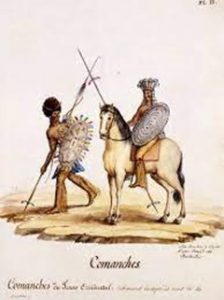
Comanches were one of the first nations to master horsemanship. They may have acquired horses while part of the Shoshones through trading with the Spanish or captures made during the Pueblo’s Revolt in 1680.10
The Comanches’ mastery of war and horsemanship was unmatched. They fought with tomahawks, lances, and knives; but, the Comanches’ archery skills were legendary. Comanches fought while remaining mounted on their horses, giving them a large advantage over any adversary. Colt’s invention of the six-shooter pistol provided the ability to fire multiple rounds and allowed the Texans to become an equal rival with the Comanche.11
Eric Smith, a renowned Chickasaw Bowyer wrote in his book, The Warrior’s Tools, “From a distance of three hundred feet, a Comanche could hit you with an arrow if you stood still, but since you could see the arrow coming, you had time to get of the way. The only catch: you had to watch for the other three or four arrows that would be following the first.”11 How did they manage to accomplish such feats of skills? During boyhood, the Comanches practiced their archery by shooting moving targets using coins, birds, and insects. The Comanche boys practiced archery on horseback so that they were able to launch five projectiles in succession from under a racing horse’s neck, holding on with only their legs.13
However, by 1740 through trade with both the French and Spanish, the Comanches acquired firearms.14 At that time, Comanche warriors abandoned their shields and leather armor, as they did little to stop a musket ball. They changed tactics as well, becoming a light cavalry force and the premiere mounted warriors of North America, equal only to the historically-comparable Mongolians.
The Comanches were known for their brutality while on the warpath. They killed all the men and infants encountered in settlements or wagon trains. Women were raped before their enslavement, or they were kidnapped for ransom. The children, depending on their age, were either enslaved or adopted into a Comanche family, and then raised as one of their own, for the Comanches did not distinguish between a born or adopted member of the tribe.15
These traits and skills allowed the Comanches to carve a large empire encompassing parts of Oklahoma, west Texas, and New Mexico, calling it Comancheria.16 During this time, the Comanches finally earned their title, “Lords of the Plains.” However, one cannot gain that status and recognition without making enemies.
The Comanche Peace party brought with them a few prisoners and hostages from their previous warpaths and raids against the Mexican-Texan and Anglo-Texan settlements on the border and within the country. The Anglo-Texans cared little for the few Mexican children offered. However, the Texans had been looking for one of the hostages. Matilda Lockhart, a sixteen-year-old girl had been captured with her sister two years earlier. Sadly for her, Comanches were not known for treating hostages with care or respect. Most would have preferred death over being a prisoner of the Comanche clan.
A written account from Mary Maverick described Matilda Lockhart, “Her head, arms, and face were full of bruises, and sores, and her nose actually burnt off to the bone—all the fleshy end gone, and a great scab formed on the end of the bone. Both nostrils were wide open and denuded of flesh.”17
Miss Lockhart also told how the Comanches beat her and woke her by poking her nose with burning fire sticks. She also mentioned how they laughed when she cried and that she was “utterly degraded,” a Victorian era slang for being gang-raped. The appearance of Matilda Lockhart caused the already on edge Texas officials to become outraged and put them on alert as both parties entered the old Spanish government building. Casa Reales, or the Council House, was a sizeable flat-roofed stone structure located near today’s Main Plaza and San Fernando Cathedral in downtown San Antonio. With rising tensions, the commissioners instructed Lt. Colonel Fisher to move the two companies in order to surround the old government building. Twelve chiefs, including Mukwoorʉ, entered the Council House with Gen. McLeod, Col. Cooke and some Texas Rangers.18
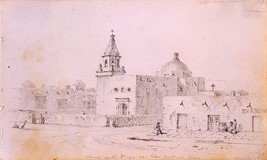
Once inside the Council House, Gen. McLeod told his interpreter to ask, “where are the prisoners you promised to bring into this talk?”19 Cheif Mukwoorʉ took several moments before answering: “we have brought in the only one we had, the others are with other tribes.” Adding a few seconds later, he said, “how do you like the answer,” in a defiant tone. Miss Lockhart claimed otherwise. She said that the Comanches had several more prisoners when they left their camp a few days ago. The Comanches intended to hold them until the Anglo-Texans offered a higher ransom for their release.20
The Texas Rangers
When people think of the Texas Rangers, they think of one of Texas’s highest law enforcement agencies and the governor of Texas’s direct command to act across state lines and the border with Mexico, uniformed in khaki top and bottoms, a light-colored wide-brimmed hat, and boots, and well equipped to handle the situation. However, that is only the modern-day Texas Ranger image; law enforcement was only a tiny part of the job. They were Indian fighters and an elite force in the Texan Army used for scouting and harassing the enemy, while also protecting the settlers who pushed into the frontier.
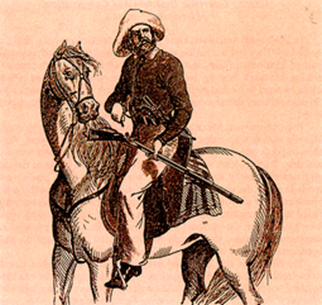
The origins of the Texas Rangers dates back to 1823, when Stephen Austin, with the permission of the Mexican government, created a mounted volunteer militia force to counter the unending raids from Comanches, Tonkawas, Karankawas, and Mexican bandits, who were harassing the settlers. The militia’s job was to “act as rangers for the common defense” of the Anglo-Texan families settling the Houston colony. With government permission, Stephen Austin raised his militia of rangers and paid them each $15 a month, or roughly $326 in today’s currency.21
A total of ten men volunteered for the initial militia. These men wore the clothing that they could afford. They were distinguish by their badge in a shape of a star made from a peso, and the large-caliber weapons they carried.22
There were three traits that Austin was looking for while creating the Texas Ranger, traits that those ten men had. The first was leadership, for it did not matter the tactics nor the size of the unit if they were not one who led by example, understanding, and the ability to make freemen into a cohesive team.23 The second was to have the characteristics of being young, physically fit, courageous, fearless, and always ready to fight.24 And the third trait was to have frontier skills, such as marksmanship with both rifles and pistols, horsemanship, skills to live outdoors for extended periods, and knowledge of the enemy.25
The newly formed Texas Rangers drew from the citizen-soldier that was a popular style of protection in the Appalachians and the American frontier. Rather than having a rapid reaction force where men pursue the attackers after the raid with varying degrees of success, citizen-soldiers were armed sentinels on the edge of a settlement.26
Then, on November 24, 1835, a committee of three men passed an ordinance with twenty-one articles that create the Provincial Government of the rebelling province of Texas. The 9th article authorized the official creation of the Texas Ranger as a law enforcement unit and para-military force. “There shall be a corps of rangers under the command of a major.”27 The number of Texas Rangers swelled from ten men to three-hundred. The article also stated that the Texas Rangers were to act as an irregular fighting force acting as scouts and harassing Santa Anna’s army by conducting raids with hit and run tactics, similar to the Native American tribes that they fought in the years prior.
Neither of the peace commissioners replied to the answer, only sending a message to Captain Howard with orders to bring his troops into the building with the order, “fire if they resist.”28 While the company filed into the closed space, Gen. McLeod ordered his interpreter to tell the chief that he and his followers would be held as hostages themselves until they released their hostages. Understandably, the interpreter was hesitant, believing that the Comanches would retaliate. However, the commissioners insisted that he convey the message to the chief. The interpreter placed himself near the door before announcing the news the commissioners wanted him to say, and then left the room.
The Comanches acted as the interpreter predicted. One of the Comanche warriors suddenly rushed towards the backdoor, drawing his knife and stabbing a soldier, while the others ran towards the entrance, brandishing their blades. Captain Howard stopped one of the Comanches, but he received a severe stab wound to his side in doing so. As the captain collapsed to the floor, he ordered his men posted at the door to fire. The order was followed and resulted in the deaths of chiefs.29
The fighting spilled outside once the sound of gunshots was heard inside the building, turning San Antonio into a battleground. The Comanches, now realizing what had happened, immediately attacked the Texas Rangers and soldiers, with not just knives but with firearms, bows and arrows, clubs, and some with rocks and bare heads. However, the Comanches’ proficiency in equestrian warfare did not transfer to foot fighting, but they were still a tenacious adversary.
The following is an account written by J.W. Wilbarger on the ensuing fight:
“Captain Mathew (Old Paint) Caldwell was attacked by a powerful Indian, and being unarmed, was forced to defend himself with rocks until a bullet from the rifle of one of the soldiers laid the Indian low. In an adjoining room, Mr. Morgen was attacked by two Indians, but succeeded in killing both of them. Lieutenant Dunington was killed by a squaw, who shot an arrow entirely through his body. Judge Thompson was in the yard amusing himself setting up pieces of money for the little Indians to knock out. While engaged, he was killed by an arrow before he suspected danger. Colonel Lysander Wells rode into the plaza just as the fight commenced when a powerful savage vaulted on behind him and first attempted to unhorse him, [Col. Wells] but failing in this he tried to guide the horse out of the plaza. The colonel attempted to draw his pistol, but owing to the fast hold the Indian had upon him was unable to do so. Finally, after circling around the plaza two or three times, one of the soldiers shot the Indian, who tumbled off upon the ground, very much to the satisfaction of Colonel Wells, who, no doubt, did not very much relish being hugged by the savage warrior.
The Indians, after fighting with a desperation which evinced great courage, were finally forced by a company of soldiers under Captain Redd to take shelter in a stone house nearby, where all were cut down except for one warrior, who secreted himself within the walls of the building. Every inducement was offed him if he would come out. He was assured if he would surrender that he would not be hurt, but all to no purpose. Finally in order to make him leave the house, the whites made large balls of cotton rags and saturated it thoroughly with turpentine. They then made an opening in the roof, set the balls on fire and threw it down on the Indian’s head. This routed him from his lair, and as he came out he was shot dead. During the engagement a party of savages made their way across the San Antonio river, but they were pursued and all killed except a renegade Mexican, who made his escape.”30
Despite the courage and bravery shown by the Comanche warriors, they were unable to gain a victory from this engagement. The skirmish resulted in the deaths of all the Comanche warriors, three women, and two children. And the remaining twenty-seven women and children were made into prisoners, while seven Anglo-Texans were killed, and eight more were wounded.31 After the fight, one of the Comanche women was dispatched to the Comanche camp to inform them that the Texans were willing to do a prisoner exchange. Many days elapsed before the deal was made, and at the conclusion, the attempt to create a friendly relation between the two nations failed. Soon the powerful and warlike Comanche Nation waged a relentless war upon the frontier and the settlers. They did so, planning and gathering strength to take revenge for the chiefs who had fallen during the Council House Fight. Their combined wrath was in the form of the Great Comanche Invasion, their pain, the Attack on Victoria, Texas, and their sorrow, the Sacking of Linnville.
I want to thank Dr. Van Hoy for her help in the early stages of this project, particularly in helping me with the approach to take in my research and in finding sources. I am also indebted to my mom, taking time out of her busy schedule to help assist in the editing phase of the project. And I am most grateful to Dr. Whitener for his encouragement and for being the one who lit a fire under my chain, and for helping me to see the importance of this project for how it could be helpful and useful to others.
- Mike Cox, The Texas Rangers (New York, NY: Forge, 2008), 75. ↵
- “About Us,” Comanche Nation (website), accessed September 9, 2021, https://comanchenation.com/our-nation/about-us. ↵
- J.W. Wilbarger, Indian Depredations in Texas: Reliable Accounts of Battles, Wars, Adventures, Forays, MURDERS, Massacres, Etc., Etc., Together with Biographical Sketches of Many of the Most Noted INDIAN Fighters And Frontiersmen of Texas (New York City NY: Firework Press, 1845), 10. ↵
- lornajarrettblanchard, “1840 — March 19, Council House Fight, Comanche Peace Party (35), San Antonio, TX– 42,” Deadliest American Disasters and Large-Loss-of-Life Events (website), accessed September 7, 2021, https://www.usdeadlyevents.com/1840-march-19-council-house-fight-comanche-peace-party-35-san-antonio-tx-42/. ↵
- Charles R Editors, The Apache and Comanche: The History and Legacy of the Southwest’s Most Famous Warrior Tribes (Coppell, TX: Charles Rivers Editors, 2021), 32. ↵
- Ernest Wallace and E. Adamson Hoebel, The Comanches: Lords of the South Plains (Norman, OK: University of Oklahoma Press, 1988), 6. ↵
- Ernest Wallace and E. Adamson Hoebel, The Comanches: Lords of the South Plains (Norman, OK: University of Oklahoma Press, 1988), 9. ↵
- Ernest Wallace and E. Adamson Hoebel, The Comanches: Lords of the South Plains (Norman, OK: University of Oklahoma Press, 1988), 9. ↵
- Ernest Wallace and E. Adamson Hoebel, The Comanches: Lords of the South Plains (Norman, OK: University of Oklahoma Press, 1988), 5. ↵
- Charles R Editors, The Apache and Comanche: The History and Legacy of the Southwest’s Most Famous Warrior Tribes (Coppell, TX: Charles Rivers Editors, 2021), 32. ↵
- larsandersen23, Lars Andersen: Recreating Comanche Archery, 2021, https://www.youtube.com/watch?v=liHlCRpS70k. ↵
- larsandersen23, Lars Andersen: Recreating Comanche Archery, 2021, https://www.youtube.com/watch?v=liHlCRpS70k. ↵
- larsandersen23, Lars Andersen: Recreating Comanche Archery, 2021, https://www.youtube.com/watch?v=liHlCRpS70k. ↵
- Jane Archer, Texas Indians Myths and Legends (Plano, Texas: Republic of Texas Press, 2000), 171. ↵
- Charles R Editors, The Apache and Comanche: The History and Legacy of the Southwest’s Most Famous Warrior Tribes (Coppell, TX: Charles Rivers Editors, 2021), 37. ↵
- Ernest Wallace and E. Adamson Hoebel, The Comanches: Lords of the South Plains (Norman, OK: University of Oklahoma Press, 1988), 7. ↵
- Robert M Utley, Lone Star Justice: The First Century of the Texas Rangers (New York, NY: Berkley Books, 2003), 25. ↵
- Don Frazier, Lesson #43: The Council House Fight, 2017, https://www.youtube.com/watch?v=bThVhLZTt7Y. ↵
- J.W. Wilbarger, Indian Depredations in Texas: Reliable Accounts of Battles, Wars, Adventures, Forays, MURDERS, Massacres, Etc., Etc., Together with Biographical Sketches of Many of the Most Noted INDIAN Fighters And Frontiersmen of Texas (New York City NY: Firework Press, 1845), 10. ↵
- J.W. Wilbarger, Indian Depredations in Texas: Reliable Accounts of Battles, Wars, Adventures, Forays, MURDERS, Massacres, Etc., Etc., Together with Biographical Sketches of Many of the Most Noted INDIAN Fighters And Frontiersmen of Texas (New York City NY: Firework Press, 1845), 10. ↵
- $15 in 1823 → 2021 | Inflation Calculator, accessed November 5, 2021, https://www.officialdata.org/us/inflation/1823?amount=15. ↵
- Robert M Utley, Lone Star Justice: The First Century of the Texas Rangers (New York, NY: Berkley Books, 2003), 15. ↵
- Robert M Utley, Lone Star Justice: The First Century of the Texas Rangers (New York, NY: Berkley Books, 2003), 3. ↵
- Robert M Utley, Lone Star Justice: The First Century of the Texas Rangers (New York, NY: Berkley Books, 2003), 4. ↵
- Robert M Utley, Lone Star Justice: The First Century of the Texas Rangers (New York, NY: Berkley Books, 2003), 4. ↵
- Robert M Utley, Lone Star Justice: The First Century of the Texas Rangers (New York, NY: Berkley Books, 2003), 17. ↵
- Mike Cox, The Texas Rangers (New York, NY: Forge, 2008), 47. ↵
- Mike Cox, The Texas Rangers (New York, NY: Forge, 2008), 75. ↵
- Robert M Utley, Lone Star Justice: The First Century of the Texas Rangers (New York, NY: Berkley Books, 2003), 26. ↵
- J.W. Wilbarger, Indian Depredations in Texas: Reliable Accounts of Battles, Wars, Adventures, Forays, MURDERS, Massacres, Etc., Etc., Together with Biographical Sketches of Many of the Most Noted INDIAN Fighters And Frontiersmen of Texas (New York City NY: Firework Press, 1845), 11. ↵
- J.W. Wilbarger, Indian Depredations in Texas: Reliable Accounts of Battles, Wars, Adventures, Forays, MURDERS, Massacres, Etc., Etc., Together with Biographical Sketches of Many of the Most Noted INDIAN Fighters And Frontiersmen of Texas (New York City NY: Firework Press, 1845), 11. ↵
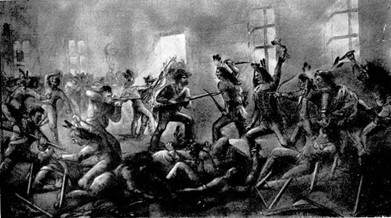


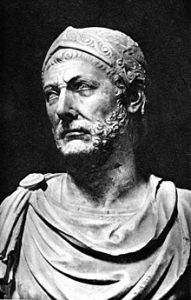
14 comments
Abbey Stiffler
I had no prior knowledge of the conflict between the Texas Rangers and the Comanche Natives, much less that it had taken place in San Antonio. It is regrettable that there was never any mutual trust between the Comanches and the Anglo-Texans. Reading about the Commanche and how they treated the abducted settlers was likewise utterly disgusting. This article is excellent overall, and it’s always intriguing to learn more about San Antonio’s historical background being that I am from out of state.
Mauricio Rebaza Figueroa
Excellent article! What a really interesting article, especially reading it as someone who recently moved to San Antonio. I really had no clue about these this topic, being really interesting to read about it for the first time. The sources you used were really good and strong to help with the trust-worthiness of your article. You also used used really good images that helped me while reading. Overall, you did a really good job.
Gisselle Baltazar-Salinas
I had last heard about the Comanches in the 7th grade having taken Texas history, and it always fascinated me. Comanches showed no mercy towards the whites or any enemies. I was not surprised but also saddened to read what they did to Matilda Lockhart. Furthermore, for as brutal as they were they were quite wise when it came to battle strategies similar to the Mongols. Additionally, I liked the backstories and explanations in between the text about the Comanches and Texas Rangers.
Elliot Avigael
This was such a fun article to read. Being from San Antonio, you don’t really think about the rich history this city has. Comanches were brutal and incredible fighters, and I appreciated how you likened their battle tactics to that of the Mongols. I was always aware that the Comanche culture was war-like and that the enjoyed battle, but I never knew that such sadism and torture that you described ever took place.
Your section on the Texas Rangers was also incredibly interesting. Enjoyed it all around, and I hope you win an award!
Trenton Boudreaux
A very fascinating and well written article on a key moment in Texan history. Its interesting how almost two hundred years ago, my home in San Antonio was a blood bath that ended any chance of peace between the Comanche and the Texan. I do wonder what would have happened if the talks succeeded. Maybe we would see more Comanches than we do now?
Paul Garza
This is a very interesting article regarding Texas history! I have never heard of this battle and much less that it happened here in San Antonio, Texas. This article is a great reminder of the conflict that existed between indigenous groups like the Comanche and European/Anglo settlers across the United States. I appreciate the flow and organization of this article. Great research!
Martha Nava
Really cool article. I enjoy reading about Texas history so this was fun. Your writing shows how much effort you put into your article, as well as your long list of sources. It was interesting to see how the Texas Rangers came to be. I also like how you divided up your article. Overall, I think you did a great job at describing the events that occurred between the Comanches and the rangers.
Jaedean Leija
I am from San Antonio , Texas and I love learning about our cities history, it makes me proud to be apart of this city. What made me want to read this article is simple the title , I’ve never heard of the event and I’m glad to be informed. The flow of the article was good , you stayed on topic and I didn’t get confused or lose interest in reading. When reading it I was happy to see or learn the background of both groups and what they did or wanted made the understanding or the learning of the event easier.
Hannah Young
An interesting article that I had no idea about until reading this very detailed article background of each section you provided to further prove your points to your audience. It is sad that people had such a shaky relationship that fighting is the only thing that seemed right to them to sort out their problems. Every story written just kept getting me dragged into the reading more and more and changed my thoughts about maybe things were better back then at certain points in time, I am wrong. Very thought provoking.
Rafael Macedo
I had never heard of the Texas Rangers and the Comanche Natives battling before, much less that it had happened in San Antonio. It is sad that the Anglo-Texans and the Comanches never had a trusting relationship. It was also extremely revolting to read about the Commanche and their treatment of the kidnapped settlers. In general, this is a great article, it is always interesting to learn more about San Antonio’s past historical circumstances.